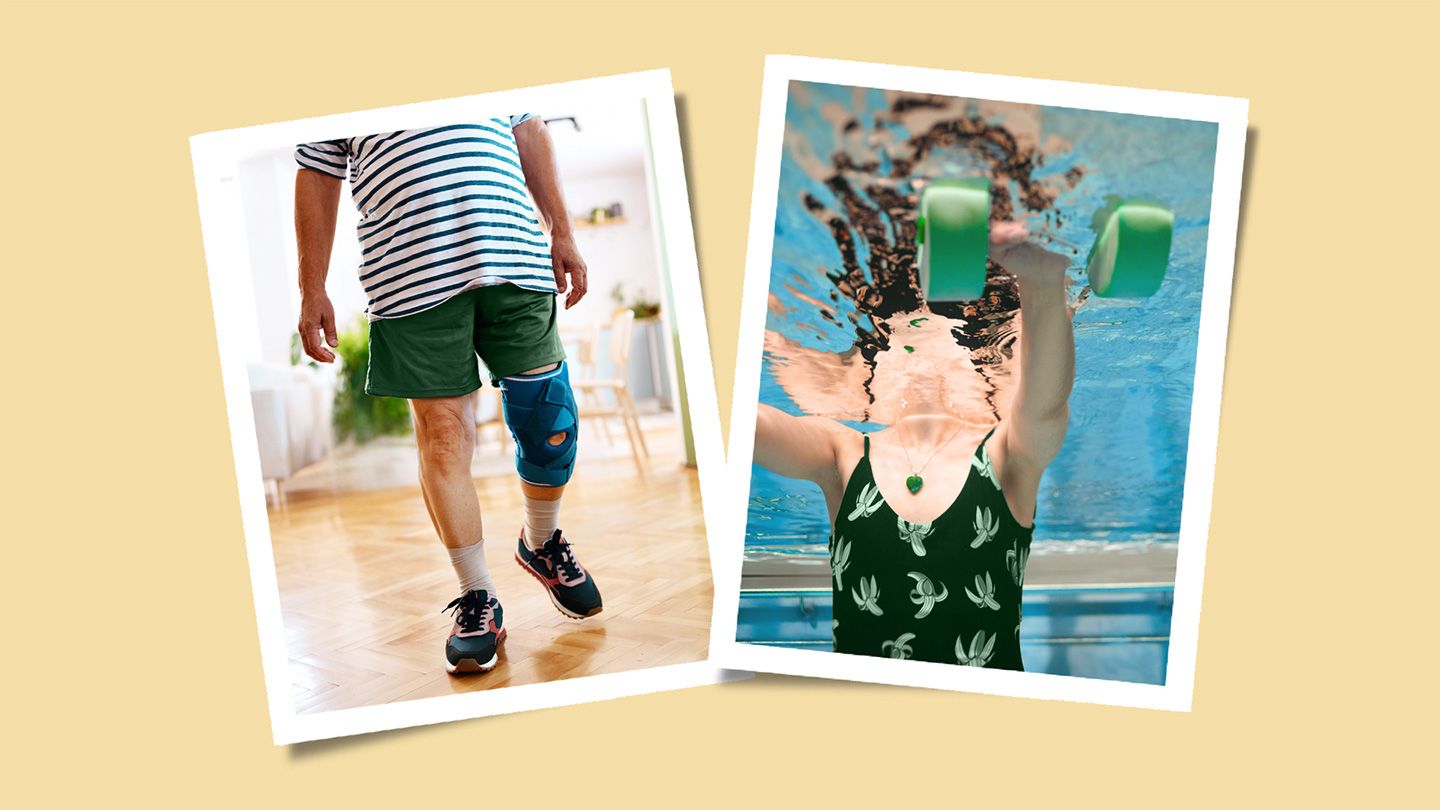“Our analysis of nearly 10,000 patients reveals that simple, accessible therapies like knee bracing and water-based exercise outperform high-tech options like ultrasound,” wrote the study author Xiao Chen and colleagues at the First People’s Hospital of Neijiang, China.
These simple interventions are able to reduce pain and improve mobility without disturbing the gut or raising heart disease risks like many common pain medications, they wrote.
Simple Treatments Are the Most Effective, Study Finds
In the research, published this week in the scientific journal PLoS One, scientists looked at data from 139 trials that evaluated outcomes from a dozen different non-drug treatments for knee osteoarthritis.
In addition to knee bracing and hydrotherapy (exercises or treatments in warm water), these options included:
- Exercises like walking
- Insoles
- Kinesiology tape
- Low-level and high-level laser therapy
- Two kinds of electrical stimulation: interferential current therapy and transcutaneous electrical nerve stimulation
- Electromagnetic energy
- Two techniques involving sound waves: ultrasound therapy and extracorporeal shock-wave therapy
In a systematic evaluation of how well these approaches improved function, relieved pain, and reduced stiffness, the scientists determined that knee braces had the highest probability of being the best technique for knee osteoarthritis, followed by hydrotherapy and exercise.
“The study provides further confirmation that for those individuals dealing with painful mild to moderate knee osteoarthritis, simple tools can be very helpful and should not be overlooked,” says Eric Holder, MD, an assistant professor of orthopedics and rehabilitation at Yale School of Medicine in New Haven, Connecticut, who was not involved in the research.
Joint Support and Exercise Produce Best Results for Knee Arthritis
The findings suggest that knee braces are especially helpful because they have the potential to provide additional support, limit excessive motion, enhance alignment and as a result improve pain, stiffness, and functionality, says Dr. Holder.
“Often when wearing a knee brace, people tend to be more aware of the positioning of their knee, which helps the individual to be more aware of their movement patterns and gait mechanics,” he says. “Additionally, knee braces provide compression, which can reduce joint swelling.”
The analysis highlighted that hydrotherapy was particularly beneficial at easing pain, and exercise in general was also consistently effective in improving both pain and physical function.
Lance Walker, PT, a physical therapist and the executive director of the Human Performance and Nutrition Institute at Oklahoma State University (OSU) in Stillwater, emphasizes that movement is key to keep joints from stiffening.
“Motion is the lotion,” says Walker, who was not involved in the study.
What Are the Best Exercises for Knee Arthritis?
Findings spotlighted hydrotherapy as being particularly effective. Holder explains that water therapy tends to be helpful because buoyancy reduces stress on the joints and makes muscle training easier. Plus, the water in hydrotherapy pools is typically kept at warm, therapeutic temperatures.
- Walking
- Stretching
- Elliptical machines
- Stationary and recumbent bikes
- Yoga
- Tai chi
High Marks for Laser and Shock-Wave Therapies, Low Marks for Ultrasound
Study results showed that both high- and low-energy laser therapies produced “pronounced therapeutic effects,” although high-energy was more effective than low. Extracorporeal shock-wave therapy also received high marks for alleviating pain.
Of all the therapies evaluated, ultrasound ranked lowest in terms of benefit. The scientists concluded that pulsed ultrasound is “moderately effective for pain improvement, but does not significantly enhance other knee joint functions.”
While over-the-counter drugs like aspirin and acetaminophen can play a role in treating acute pain, Harshvardhan Singh, PhD, a clinician-scientist specializing in neuromuscular performance and physiology at OSU’s Human Performance and Nutrition Research Institute, suggests that these new findings support the importance of physical therapy methods like hydrotherapy for long-term benefit.
“When you take an over-the-counter pain pill, the pain can typically come back, especially if the root cause of the pain was not addressed,” says Dr. Singh, who was not involved in this research. “Physical therapy gets more at the root cause and helps a patient reach the ultimate goal, which is to move and get the body back into action.”
Not Everyone Will Respond to Knee Therapies the Same Way
Singh notes that although this type of meta-analysis can provide meaningful big-picture takeaways, it can be difficult to draw conclusions from such a wide range of studies with diverse methodologies.
Walker points out that while some of the approaches evaluated in the study may rate higher than others, what works also depends on the individual — which is why it’s important to work with an expert to find what works best for you.
“Some of these modalities, like exercise, may give you more bang for the buck — but if there is a therapy that helps you to get moving, then it’s worth it,” he says.
Read the full article here




